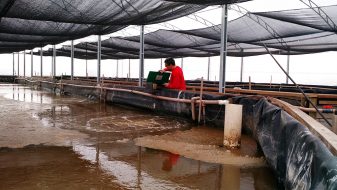Using the stable isotope technique to determine relevance of food sources
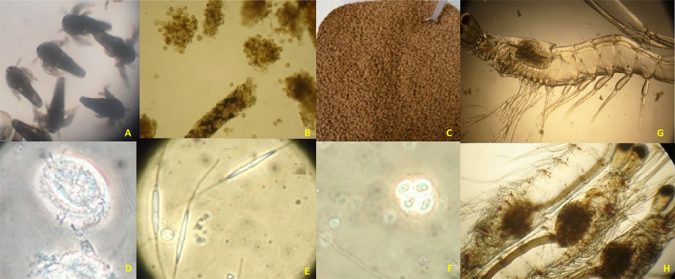
In the early stages of marine shrimp culture, a diet including live food can be more efficient as a food source because these food items remain viable for a longer time in the water column and have high digestibility. However, live food is expensive to produce and maintain, and depends on highly-trained workers for their production.
The Biofloc Culture Systems – BFT (Biofloc Technology) can be a good source of live food in the grow-out phase of marine shrimp production. This technology is based on the addition of an organic carbon source that is used by bacteria to convert the excess nitrogen in the microbial biomass in the production tanks, and thus it can reduce water exchanges. In the early stages of larval shrimp rearing (from PL-1 phase until PL-30), shrimp production is generally performed in clear water systems with the addition of food items like phytoplankton, zooplankton (Artemia sp.) and commercial feeds, and using high water exchange rates. An alternative feed can be the incorporation of BFT systems for these early life stages. However, information is needed on the consumption and assimilation of bioflocs by young, developing postlarvae of shrimp.
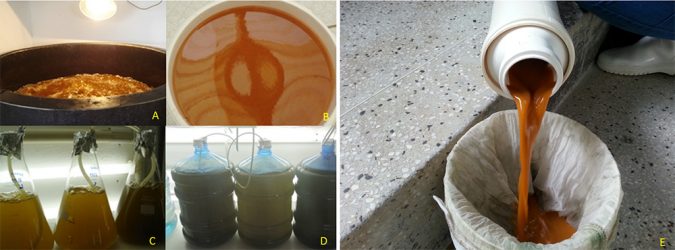
The stable isotope technique has been used as a complement to conventional techniques used in diet studies, because it can show the proportion of each prey/feed assimilated into the predator animal’s diet. The principle of this technique is that stable isotopes of different chemical elements in the animal tissue reflect the ratio present in the food consumed, and this is registered as a signature in the new formed tissues of the consuming animal.
Study setup
The experiment lasted for 30 days, starting with one-day-old (PL1) shrimp postlarvae, and used two different strategies to control ammonia when concentrations reached 0.5 mg/L. The first strategy was water exchange at a rate of approximately 70 percent of the total volume (the control treatment), and the second strategy included organic fertilization with dextrose (the BFT treatment) with no water exchange.
In both treatments, shrimp were fed with three different commercial feeds (CF), according to the animal stage development; shrimp were fed three times per day with commercial feeds, and once with frozen Artemia sp. nauplii. The microalgae Chaetoceros muelleri was inoculated into the experimental tanks in the first experimental day at a concentration of 5 x 104 cells/mL.
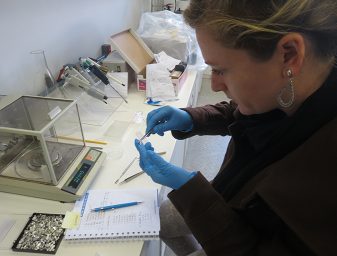
For water quality monitoring, dissolved oxygen, temperature and pH were measured daily. Ammonia (N- (NH3 + NH4+)) was analyzed every two days. Nitrite (N-NO2–) and phosphate (P-PO43-) were measured weekly. Alkalinity (mg/L CaCO3) and nitrate (N-NO3–) were determined in the initial and final samples. The growth performance of test animals was evaluated by size, weight and survival.
Samples of different food sources, bioflocs and shrimp postlarvae were collected on the 10th, 20th and 30th days of the experiment to determine the carbon and nitrogen isotopic values. All of the samples were ground, weighed and placed into tin capsules. The analyses of carbon (13C / 12C) and nitrogen (15N / 14N) isotopic ratios were performed at the UC Davis Stable Isotope Facility, CA, USA. The Bayesian model of isotopic mixtures (package SIAR) was used to determine the relative contributions of food sources to the growth of shrimp in the different culture periods.
Results and perspectives
During the trial, no differences were determined in the performance parameters analyzed for the shrimp postlarvae (Table 1), or in the water quality parameters (Table 2), all of which remained within recommended values for L. vannamei. The commercial feeds tended to increase their contribution to the animals in both treatments (Figures 1 and 2). However, we observed that the biofloc contribution was around 50 percent (Figure 2). In the BFT treatment, the bioflocs appeared to have an important role in the performance of L. vannamei postlarvae. The microalgae presented a similar contribution when compared to the bioflocs in the BFT treatment, and in both treatments, microalgae were assimilated more than the Artemia sp. nauplii.
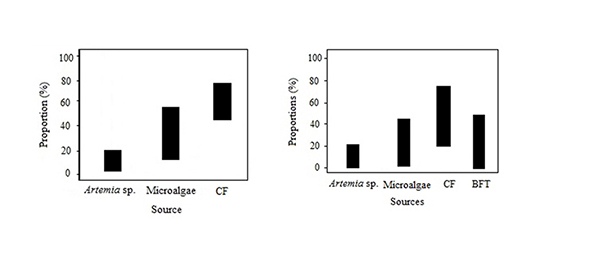
| Treatments | CT | BT |
|---|---|---|
| Survival (%) | 93.2 ± 7.11 | 91.2 ± 8.53 |
| Initial biomass (g) | 0.065 ± 0.002 | 0.065 ± 0.002 |
| Final biomass (g) | 3.16 ± 0.7 | 3.14 ± 0.44 |
| Treatments | CT | BT |
|---|---|---|
| Temperature (degrees C) | 27.8 ± 1.14 | 28.13 ± 1.33 |
| Oxygen (mg L-1) | 5.72 ± 0.4 | 5.73 ± 0.49 |
| Salinity | 30.16 ± 0.98a | 31.33 ± 0.52b |
| pH | 8.05 ± 0.24 | 8.04 ± 0.23 |
| Alkalinity (mg L-1 as CaCO3) | 248.75 ± 2.5a | 112.5 ± 14.43b |
| Phosphate (mg L-1) | 0.99 ± 0.6 | 1.93 ± 1.21 |
| Ammonia (mg L-1) | 0.65 ± 0.15 | 0.65 ± 0.1 |
| Nitrite (mg L-1) | 0.7 ± 0.15a | 1.34 ± 0.3b |
| Nitrate (mg L-1) | 1.32 ± 1.17 | 1.9 ± 2 |
It was observed that Artemia sp. had a smaller contribution than other food sources in the growth of postlarvae (Figures 1 and 2). Despite being financially advantageous to reduce its use, it is unknown what proportions or what direct effect any reduction in the use of Artemia sp. could cause in shrimp postlarvae, because this food source provides nutrients that are necessary for the proper development of early life stages of penaeid shrimp.
During the pre-nursery phase, the influence of inert feed (or commercial feed) on the growth of the L. vannamei postlarvae increased over time, but young animals in the presence of bioflocs can obtain nutritional benefits, increasing their growth. In addition to this nutritional increase, fertilizations with carbon sources can reduce the amount of water used in the hatchery/pre-nursery phase.
Now that you've reached the end of the article ...
… please consider supporting GSA’s mission to advance responsible seafood practices through education, advocacy and third-party assurances. The Advocate aims to document the evolution of responsible seafood practices and share the expansive knowledge of our vast network of contributors.
By becoming a Global Seafood Alliance member, you’re ensuring that all of the pre-competitive work we do through member benefits, resources and events can continue. Individual membership costs just $50 a year.
Not a GSA member? Join us.
Authors
-
Sabrina M. Suita
Marine Station of Aquaculture
Institute of Oceanography
Federal University of Rio Grande
C.P.474-Rio Grande (RS)-CEP 96201-900- Brazil[114,98,46,109,111,99,46,111,111,104,97,121,64,97,116,105,117,115,109,115]
-
Alessandro P. Cardozo
Marine Station of Aquaculture
Institute of Oceanography
Federal University of Rio Grande
C.P.474-Rio Grande (RS)-CEP 96201-900- Brazil[109,111,99,46,108,105,97,109,116,111,104,64,111,114,100,110,97,115,115,101,108,97,99,111]
-
Paulo Cesar Abreu
Marine Station of Aquaculture
Institute of Oceanography
Federal University of Rio Grande
C.P.474-Rio Grande (RS)-CEP 96201-900- Brazil[114,98,46,103,114,117,102,64,97,99,112,99,111,100]
-
Wilson Wasielesky Jr., Ph.D.
Marine Station of Aquaculture
Institute of Oceanography
Federal University of Rio Grande
C.P.474-Rio Grande (RS)-CEP 96201-900- Brazil[114,98,46,109,111,99,46,115,117,114,107,105,109,64,119,111,110,97,109]
Tagged With
Related Posts
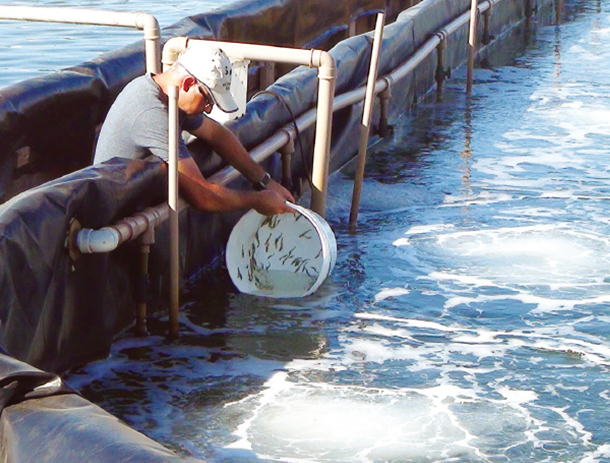
Innovation & Investment
Brazil study results encouraging for injector
Zero-exchange biofloc systems allow elevated stocking densities and production, but also require more dissolved oxygen and thorough water circulation. A new type of air injector uses only a centrifugal pump to recirculate water while naturally aspirating ambient air.
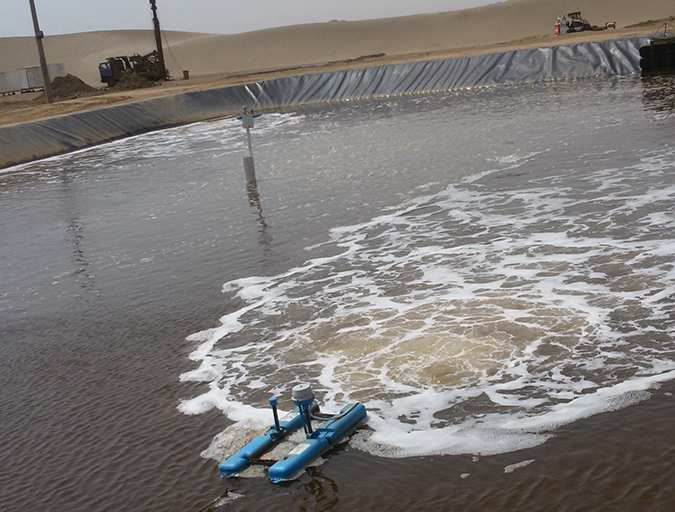
Health & Welfare
Shrimp biofloc production trials in Saudi Arabia
An R&D trial was conducted with shrimp biofloc technology at a commercial facility in Saudi Arabia. Results indicated that biofloc technology can be effectively applied, with some protocol adjustments, in the KSA’s extreme desert environmental conditions.
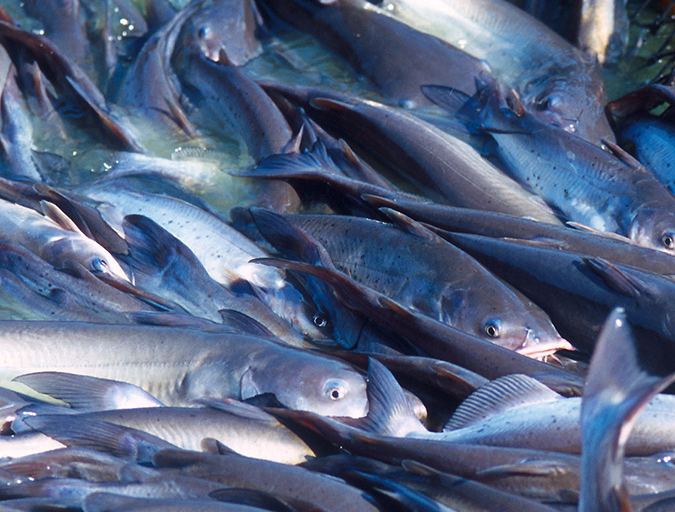
Intelligence
Biofloc technology production promising in temperate zones
A study was conducted to assess the feasibility to grow Channel catfish (Ictalurus punctatus) in an outdoor biofloc system during winter in a temperate zone. High biomasses of market-size channel catfish were successfully maintained through the winter with high survival and in good condition in both treatments.
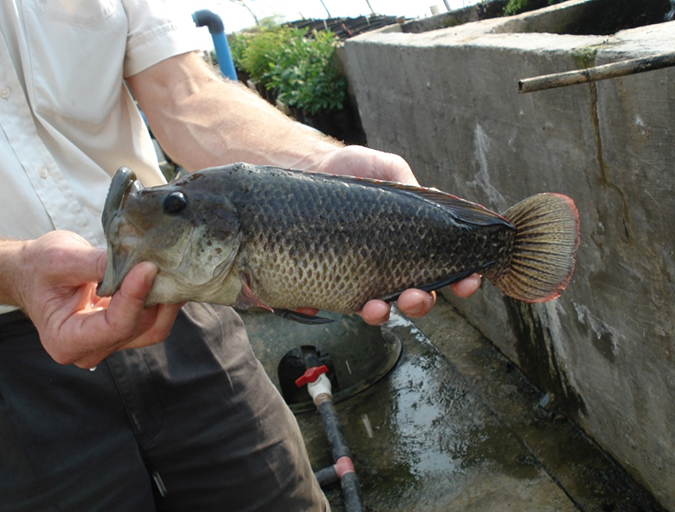
Aquafeeds
Biofloc systems viable for tilapia production
Well-designed and managed biofloc technology systems are a viable alternative for production of various species like tilapia, to increase feed efficiency by lowering aquafeed protein requirements and to help reduce or eliminate effluent discharges.



